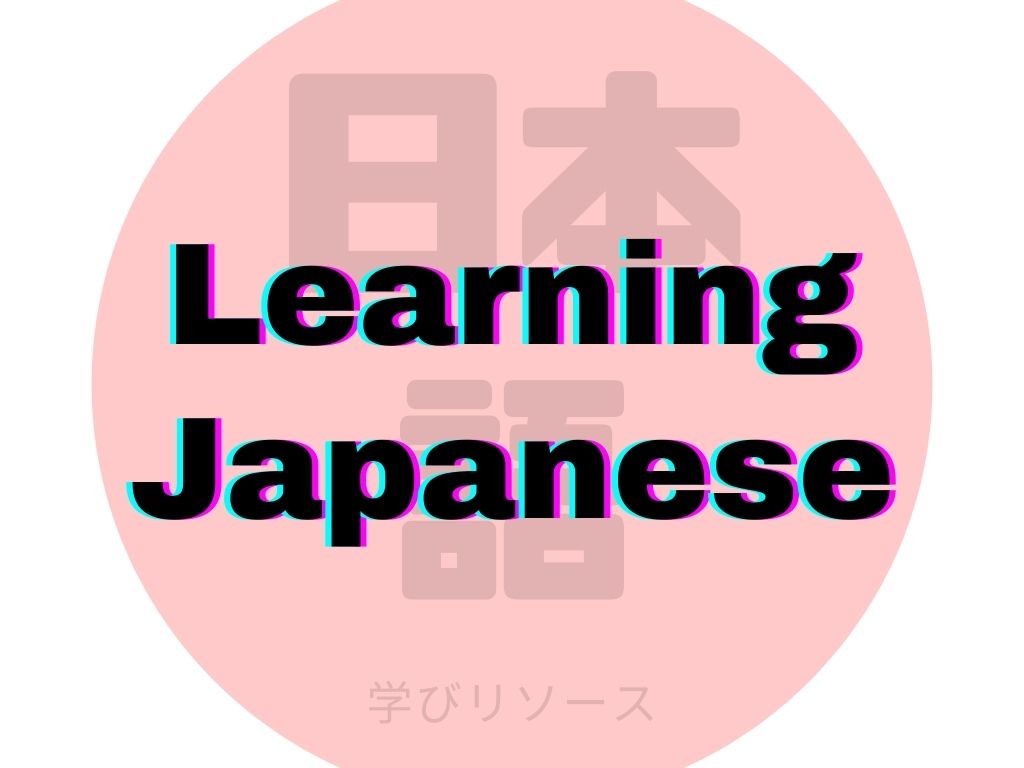
So you want to learn Japanese.
But you have no idea where to start.
You’ve probably seen a few TikToks or Reels where people explain a few phrases here and there. Maybe you’ve read a thing or two online, in sites such as Tae Kim’s Guide or Tofugu.
But you sometimes wish there was some sort of guide to learn Japanese, a list of resources that you can easily follow or refer to in your journey to learn Japanese.
You wish there was a road map that could tell you where to go when you need to learn specific aspects of this beautiful language.
As someone who has studied Japanese on his own since 2005, I know the frustration. I know what it’s like to not know exactly where you need to head next on your journey.
That’s why I’ve put together this handy list of resources for learning Japanese.
Learning any language is difficult, but learning Japanese is especially so if you’re starting out from a language such as English.
However, if you have the right resources and the knowledge of how and when to use them, learning Japanese is also a beautiful journey full of amazing rewards.
So let’s dive into the list I’ve prepared of the 5 resources that will help you on this journey.
But first, let’s talk a little bit about the basics of the Japanese language. I promise this will make everything easier, since it’ll help you better define your goals and focus on what you need to learn at the right time.
Note: Looking for something a little more advanced? Check out my guide on Japanese numbers.
Table of Contents
The Components of the Japanese Language
All languages are made up of different parts.
Grammar, vocabulary, speaking, listening, writing are just a sample of the many components that make up any given language.
With Japanese, we have the added complexity of its writing system, which is unique to the language.
In order to advance in your journey to learn Japanese, you’ll need to first understand the components of the Japanese language.
Once you’ve done that, you’ll be able to define your own goals for learning Japanese and you’ll also be better prepared to choose the right resources for your goals.
For me, Japanese is basically made up of the following components:
- Grammar
- Reading/Writing
- Kanji/Vocabulary
- Speaking/Listening
1. Barron's Japanese Grammar
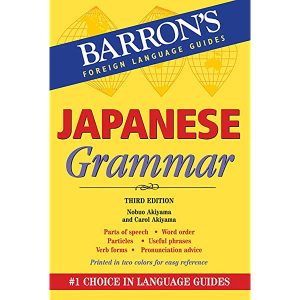
For the absolute beginner to Japanese, I always recommend Barron’s Japanese Grammar. Barron’s book is an inexpensive, clear, and concise look into the fundamentals of Japanese grammar.
From the very basics of Japanese’s Subject-Object-Verb word order (which is different from English, which uses a Subject-Verb-Object word order), to a look at how various parts of speech (nouns, verbs, adjectives, etc.) work in Japanese, to a detailed introduction to Japanese particles (similar to English prepositions), Barron’s book addresses all the fundamentals without overwhelming its readers.
The best feature that makes this book excellent for beginners is that it does not use the Japanese writing system for its examples.
It does teach you the basics of reading and writing Japanese, but it doesn’t impose on its readers by demanding they master reading Japanese characters in order to advance.
While you will want to start learning Japanese characters sooner rather than later, I think it’s extremely valuable to have a book that allows you to learn grammar even before you become adept at handling Japanese characters.
Best of all, if you are still undecided on whether learning Japanese is something you’d actually like to pursue, you can use Barron’s Japanese Grammar to help you make up your mind with a minimal investment of both time and money.
If you do decide to pursue learning Japanese, then Barron’s book will be a great resource in letting you get a good start on your journey.
If you decide to not pursue Japanese any further, then that’s okay, you only spent a couple of bucks and gained valuable information about your goals and interests.
Regardless of your decision, there is no doubt that Barron’s Japanese Grammar is an excellent resource for learning Japanese.
You will learn about Japanese sentence structure, how words in a sentence relate to each other, and how to start “thinking in Japanese,” even if you have a very small vocabulary.
The book also includes a handy table of katakana and hiragana—two of the three writing systems Japanese uses simultaneously—which you can continuously refer to as you learn how to read and write Japanese.
If you’re just starting out and are looking for a book to learn Japanese fundamentals, make it Barron’s Japanese Grammar. It will give you a solid foundation that will be invaluable no matter what your goals for learning Japanese are.
Great for:
- Anyone starting out
- Grammar
- Reading/Writing
Not great for:
- Kanji/Vocabulary
- Speaking/Listening
2. Japanese Sentence Patterns for Effective Communication
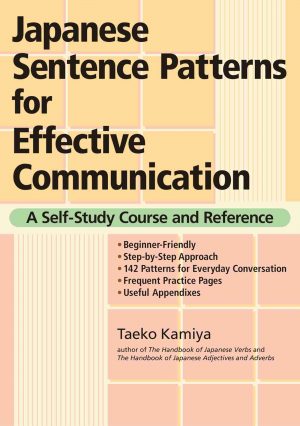
- Transitioning from beginner to intermediate level
- Long-term reference
- Grammar
- Reading/Writing
Not great for:
- Kanji/Vocabulary
- Speaking/Listening
3. Duolingo
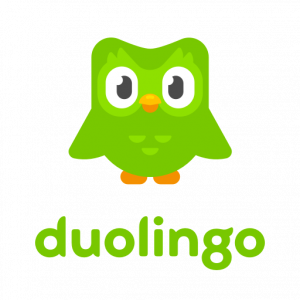
The past two items have focused mostly on grammar, because—as I mentioned earlier in the post—for learning Japanese, you will need to study at least some grammar.
As great as those grammar resources are, however, they don’t address two other very important aspects of learning Japanese: kanji/vocabulary and speaking/listening. That’s where Duolingo comes in.
Launched in 2011, Duolingo has become one of the biggest and most used language-learning apps in the world.
Its interactive, gamified approach to learning languages has proven extremely effective in getting people interested in learning languages all over the world, and has succeeded in breaking down barriers to entry.
Best of all, Duolingo offers its entire content completely free (with ads), so as long as you have access to a computer, a smartphone, or a tablet, you can get started learning Japanese for no additional cost.
Since it’s free, you might have expected Duolingo to be number one on this list.
However, as I have mentioned before, with Japanese, you really need to get some fundamental grammar points out of the way first, and, as great as Duolingo is, grammar is actually Duolingo’s weakest point.
If you go into learning Japanese on Duolingo without some independent grammar study under your belt, you’ll quickly find yourself doing exercises where you know the right answer but don’t really understand why.
Where Duolingo does shine, however, is in its speaking and listening resources.
Language books are great for learning grammar, but there’s very little they can offer in terms of speaking and listening. That’s where an app—especially one as incredibly well designed as Duolingo—proves invaluable.
Among its many features, Duolingo offers speaking and listening exercises.
Not everyone has a local Japanese-speaking community readily accessible, and connecting with people online can be intimidating, time-consuming, and difficult to coordinate.
Without access to native speakers of the language you’re learning, an app is the next best thing for practicing speaking and listening.
Aside from actual listening exercises (where you are required to listen to a voice clip with no subtitles and answer what you’ve heard), almost all exercises of any kind are voiced, which means you can practice listening and speaking (if you read them aloud) constantly while playing Duolingo.
Duolingo also stands out in reading and writing, since it includes special lessons for learning katakana and hiragana.
You can also set the kanji in the exercises to be written with hiragana and katakana pronunciation guides or just the kanji alone.
You will also learn tons of vocabulary as you advance through the lessons, from common everyday words, to highly specialized vocabulary like legal and scientific.
In short, Duolingo is weak for grammar but excellent for pretty much everything else.
From beginners (who already have some grammar knowledge) to very advanced learners, you can’t go wrong with Duolingo for learning Japanese.
Great for:
- Speaking/Listening
- Reading/Writing
- Kanji/Vocabulary
Not great for:
- Grammar
4. StudyKanji.net
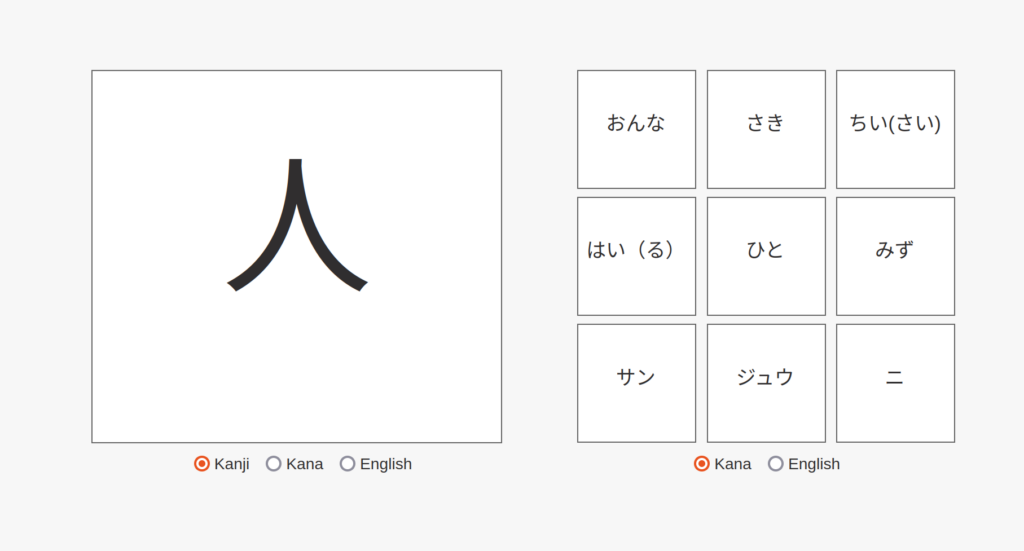
Few things can inflict panic on learners of Japanese quite like kanji.
Kanji (漢字) are Chinese characters that have been borrowed into Japanese and that are used together with katakana (カタカナ) and hiragana (ひらがな) to write Japanese.
That’s right: Japanese uses three writing systems simultaneously, and learning to read and write Japanese means learning all three.
While katakana and hiragana (collectively called “kana”) are relatively easy to learn (each character is a syllable), kanji is an entirely different beast.
Each kanji could represent either an entire word or part of a word, depending on context, and each kanji usually has at least two readings (a Chinese reading, called on-yomi, and a Japanese reading, called kun-yomi).
Some kanji are drawn with just a few simple strokes (like 三), but many are made up of more than 10 strokes (like both kanji in 複雑).
To top it all off, people who grow up in Japan are expected to know somewhere around 2000 kanji by the time they graduate high school.
The reality is learning kanji takes time and dedication.
There are no shortcuts and no magic way to cram thousands of foreign characters into your brain in a short amount of time.
What you can do is make learning kanji easier and more efficient so it doesn’t become a painful experience and you don’t spend more time than you really need to on learning them.
That’s where StudyKanji.net can help you.
There are many kanji learning tools out there. I won’t compare tools here, I will simply discuss the method that worked for me.
After years of trying various approaches, the one that worked for me was, instead of focusing on memorizing kanji, I decided to focus on recognizing kanji.
Getting your brain to memorize boring information is hard and your brain will fight you, but getting your brain to recognize things is easy: that’s literally what the brain does all the time.
I didn’t need to know all sorts of information on a kanji, I just needed my brain to not forget the kanji I had studied.
I can learn as much information as I want on a kanji later on as needed. But first I just need my mind to not forget it.
What this approach meant in practice was that I would focus on trying to recognize a kanji by carefully looking at it (literally like inspecting a picture or a drawing) and I would learn just two bits of information about it: its general meaning and one reading.
Not two readings.
Not every possible meaning.
Just one reading and one general meaning.
With this approach, and with a tool like StudyKanji.net, I was able to focus on retaining kanji instead of focusing on memorizing stuff about kanji.
Why is StudyKanji.net the tool that worked best for this approach?
StudyKanji.net is a flashcard software that allows you to configure it so you match a kanji to one of its readings.
Other software I have tried allow you to match a kanji to all its readings, but not just one reading.
By allowing you to hone in on just one reading, StudyKanji.net is the perfect tool for focusing on recognizing and retaining kanji.
You’ll still need to repeat these flashcard exercises a couple of times until your brain recognizes the kanji.
As I mentioned earlier, learning kanji will take time and practice.
But by focusing on recognizing, you’ll be able to retain kanji more quickly and with much less effort than if you try to memorize a bunch of information about them.
Once your brain can recognize the kanji, it’ll be much easier to learn other things about it.
Another great feature of StudyKanji.net is that it doesn’t impose its own idea of what the “best” order to learn kanji is.
It categorizes kanji into the five JLPT levels (JLPT is a standardized Japanese proficiency test), but it doesn’t impose any order on you nor gatekeep you in any way. You are always free to choose whatever flashcard deck you want from any of the JLPT levels.
I myself still have a lot of kanji to learn.
But at my current level I am able to play video games and read manga and online articles in Japanese with infrequent kanji lookups.
It took some time, but it didn’t take twelve years of formal study and I kept my sanity along the way.
For more formal texts (like some newspapers and older literature texts) I still require relatively frequent kanji lookups, but I’m okay with that for now.
Also bear in mind that even native Japanese speakers today struggle a lot with kanji.
Digital writing systems (computers, smartphones, etc.) automatically perform kanji lookups as you type, so even native Japanese speakers today simply recognize a kanji when they see it in their keyboard suggestions and don’t necessarily know a lot of information about it.
In short: learning kanji is complicated and time-consuming for everyone (even native Japanese speakers), so the best we can hope for is to make the process easier and more efficient for ourselves.
Focus on recognizing, not memorizing. Don’t sweat it, and use StudyKanji.net as your best tool to find a way forward in learning kanji.
After you learn the most important kanji (mostly those in JLPT levels N5, N4, and N3), you’ll start to see that learning kanji after that will happen more organically as you learn vocabulary.
You’ll learn new kanji naturally as you learn new words, and you’ll find that the amount of dedicated study time you have to devote to new kanji decreases as your vocabulary grows.
Great for:
- Kanji/Vocabulary
- Reading/Writing
Not great for:
- Grammar
- Speaking/Listening
5. Jisho.org
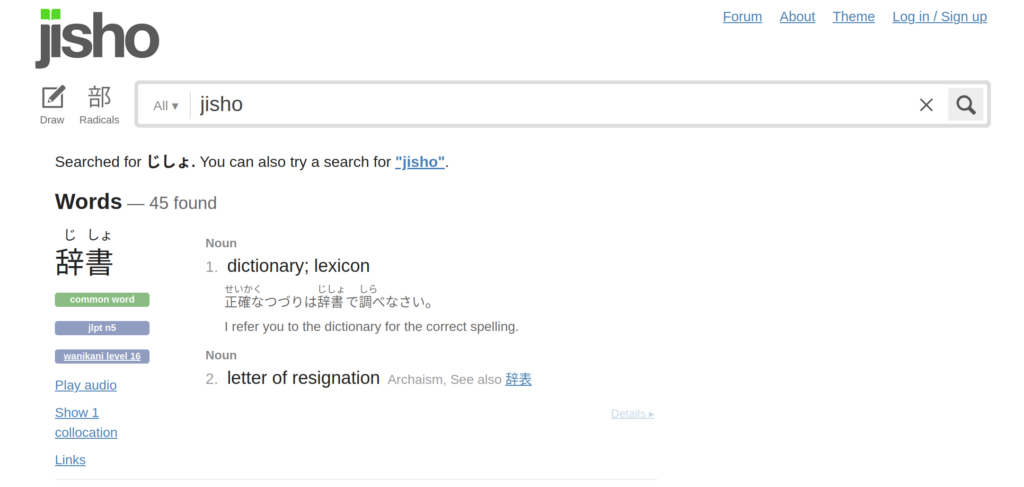
Whew, that was a long section.
But don’t worry, I promise this one will be much shorter.
There is one tool that everyone who is learning Japanese absolutely needs at all times: a good Japanese dictionary.
Of all the English-Japanese dictionaries I’ve tried, the one I have come to constantly rely on is Jisho.org.
Jisho.org (“jisho” is the Japanese word for “dictionary”) is simply an amazing tool.
It automatically recognizes whether you’ve typed English or Japanese, gives you comprehensive lookups for all words, breaks down individual kanji for you and allows to look at them in surprising detail, and offers loads of example sentences.
It also gives you detailed information on the classification of Japanese verbs, something you’ll come to appreciate as you progress in learning Japanese.
It’s free, it’s online, it’s comprehensive, and it’s extremely easy to use.
You really can’t go wrong with Jisho.org as your main dictionary. I have it as a pinned tab in all my browsers. It truly is an indispensable tool.
Great for:
- General reference
- Kanji/Vocabulary
- Reading/Writing
- Grammar
Not great for:
- Speaking/Listening
Conclusion
Learning Japanese is an incredibly rewarding experience.
Especially when you’re learning Japanese on your own, however, it can sometimes be difficult to know where to head next or what resources to rely on.
I hope the five items on this list can help you on your journey to learn Japanese, whether your goal is to learn a few phrases for getting around or achieving native-level proficiency.
